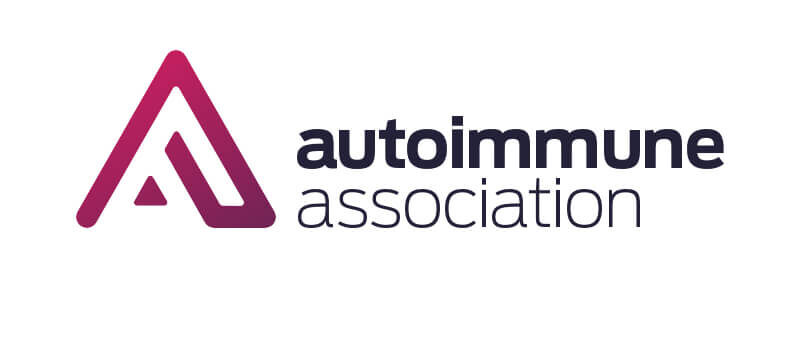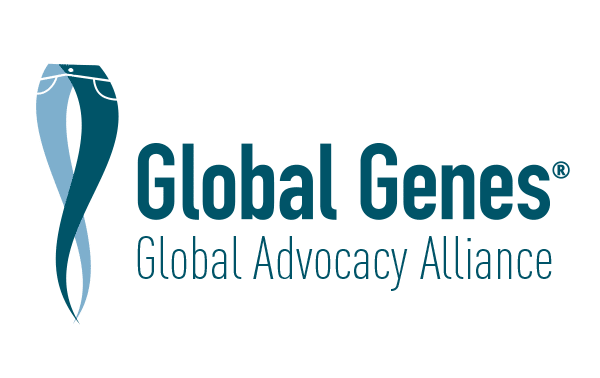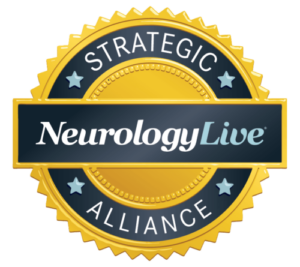
Choose Your Language:
Home » What to KNOW about NMO

The information on this page will help to inform patients who are diagnosed with NMO, their caregivers/loved ones, and/or those who would like to learn more about neuromyelitis optica.
Though NMO is a rare disease, there are an increasing number of neurologists around the world who are now specializing in NMO, MOG and related disorders. Furthermore, scientists are dedicating their time and efforts to better understand the epidemiology of NMO while improving diagnostics and treatments to ultimately improve the quality of life for patients and their caregivers.
Below, you will find a list of important questions and answers with the goal of informing you and your loved ones about this condition. This guide covers important information about diagnosis, symptoms and available treatments. Please be aware that the questions below are answered with general information about NMO and may not fit your individual situation.
Neuromyelitis optica (NMO), Devic’s disease or neuromyelitis optica spectrum disorder (NMOSD) are different names for the same condition. NMO is an autoimmune disease that causes inflammation in different locations of the central nervous system (CNS).
The disease manifests itself through relapses (also called exacerbations or attacks) and the most common relapses are:
While we know how NMO happens, nobody knows why… yet. As in other autoimmune diseases (eg. Type 1 Diabetes, Lupus, Crohn’s disease), the person’s own defensive immune system attacks normal proteins in the body. In most NMO patients, blood tests reveal antibodies that attack a protein called Aquaporin-4, or AQP4 for short. In other patients, a blood test can reveal the presence of antibodies to the myelin oligodendrocyte glycoprotein, or MOG for short. Still, in other patients with NMO, antibodies to either of these proteins are not found.
AQP4 is the most important water channel in the central nervous system. It functions like a gate, allowing water to come in and out of the cells. Most AQP4 is located in cells called astrocytes. Higher levels of AQP4 are found in optic nerves and spinal cord, the reason most attacks of inflammation happen in these locations. The inflammation may lead to nervous tissue abnormalities and even tissue death (necrosis).
MOG is a protein believed to be important in the myelination of nerves in the central nervous system. Myelin surrounds the nerves and helps nerve impulses pass along more efficiently. NMO patients with MOG antibodies develop antibodies that target the myelin coating around the nerves (demyelination). Like with AQP4-associated NMO, it is not well understood why patients develop these antibodies. Like with AQP4-associated NMO, the clinical symptoms depend on where the inflammation occurs in the nervous system, and can occur in the brain, optic nerves or spinal cord. While the relapses are often severe, the recovery is often better than what’s seen with AQP4-associated NMO.
NMO is usually diagnosed by a neurologist or neuro-ophthalmologist. These physicians use a combination of:
Most often a NMO attack takes hours or days to reach the most neurological disability. NMO specialists consider it an emergency since patients who get treatment more promptly have better chances for recovery. The history may involve symptoms related to vision, or difficulty with strength, sensation, or bladder control. As mentioned before, some patients with NMO may also have attacks of prolonged severe nausea or vomiting.
An MRI is a very important test in the diagnosis of NMO. Advanced machines create magnetic fields that are used to obtain detailed images of the optic nerves, brain and spinal cord. The person lies in a long tube and the MRI scan takes approximately 30 to 45 minutes. In most cases, there is also a need to use an intravenous contrast agent, called gadolinium. Using the contrast helps identify which areas of the brain have active inflammation. MRIs are painless. The person needs to lie still so high-quality images can be obtained. Your doctor will determine which MRIs you should have and whether you need intravenous contrast.
If a patient with NMO has symptoms related to weakness, altered sensation, or bladder control, the MRI of the spine most often shows inflammation of long segments of the spinal cord. Such lesions occur either on the cervical (neck) and/or thoracic areas (chest). To compare, in multiple sclerosis (MS), a disease that also may cause inflammation in the spinal cord, the lesions tend to be shorter and smaller, and more often affect sensation only.
A brain MRI is done to look for inflammation of the optic nerves and other sites in the brain. While up to 60% of patients may have abnormalities in the brain, most of these areas do not lead to symptoms or disability. Inflammation in the optic nerves, however, can be seen on brain MRIs, and do cause symptoms related to vision.
These are tests that can be performed both in blood and spinal fluid (the liquid that surrounds the brain and spinal cord). It is usually more helpful to test the blood since this is where the antibodies are produced. This is a very important test, because the presence of AQP4 antibodies is very specific to a diagnosis of NMO. The AQP4 antibody is found in approximately 80% of patients with NMO, and along the course of your treatment, your health care provider may need to repeat the test. Sometimes after immunosuppressant treatment is started, the antibody test may become negative, though this is not helpful in deciding if treatment is working well. The MOG antibody test is less specific to this disease and can be found in patients who have other demyelinating diseases. Some patients who have MOG antibodies, such as those with NMO, may have relapses, and some patients only experience inflammation one time.
Cerebrospinal fluid (CSF) is the clear liquid that surrounds and protects the brain and spinal cord. A lumbar puncture (LP) is the procedure that allows a small amount of CSF to be drawn from the spinal cord with a needle. This only takes a few minutes and is normally done under a local anesthetic. Some people can get a headache after the procedure which can generally be avoided by lying flat for a few hours after the test and drinking plenty of water or beverages with caffeine.
Ophthalmoscopy (looking at the back of the eye) may show swelling of the optic disc. In a Visual Evoked Potential (VEP), electrodes are placed on the back of the head to measure the speed of nerve messages along the optic nerve from the eye to the brain. Damage to the optic nerve shows slower response time. The visual field tests (VF) show whether there are any areas of vision missing (central or peripheral). Optical Coherence Tomography (OCT) is a scan that can measure the thickness of the nerve fibers in the optic nerve.
A relapse or an ‘attack’ of NMO occurs when there is new inflammation within the nervous system. The inflammation causes people to experience new symptoms. It is not yet understood what causes or triggers a relapse. The timing is also unpredictable. The good news is that treatment with drugs to suppress part of the immune system may be very effective at preventing relapses. There are many options for treatment and you and your health care provider will work to find the best option for you.
In people with NMO, relapses usually affect either the optic nerve or the spinal cord. When relapses affect the optic nerves, they cause problems with vision. Symptoms normally come on over a period of hours or days, or people may wake up one morning with visual symptoms. Some people notice that it is painful when they look around, or have pain behind the eye. Optic neuritis can also cause colors to look faded or ‘washed out’ or grayish. These symptoms may occur in one eye or both at the same time.
When people with NMO experience a relapse affecting the spinal cord, they may experience symptoms related to strength and sensation in the arms, legs and trunk, and problems with bladder or bowel control.
Below are examples of the many different symptoms that inflammation in the spinal cord may cause:
If a patient with NMO had an inflammatory NMO attack in the past, they may find that their symptoms vary from day to day. Some triggers that may make old symptoms temporarily worse can include being overly tired, overheated from exercise or the sun, or when they have an infection such as a urinary tract infection. This is not a new attack. However, deciding if symptoms are caused by old damage or a new attack can be challenging, and your health care provider can help to figure out the cause.
It is important to remember that relapses of NMO need to be assessed and treated promptly. Please follow the guidelines below. If you feel that you are experiencing any of the symptoms described, please contact your NMO health care provider. If you are not getting a prompt response, you should go to the nearest emergency room and have the doctors there contact your neurologist for expert advice on how to investigate further.
Every patient, and every relapse, is different and the treatment will depend upon your individual needs. It is important that you are assessed quickly during a relapse, as early treatment may lessen or prevent long term damage. The most common treatments are:
plasmapheresis also referred to as plasma exchange/PLEX (a procedure that separates the blood to remove antibodies)
The time taken to recover and degree of improvement after a relapse can be affected by many factors and vary from person to person. In many cases, rehabilitation can also help.
Currently, there is no cure for NMO. The treatment is directed to different goals:
Below you will find the options for each of these goals.
For Relapses:
A high dose steroid, methylprednisolone (Solu-Medrol) is usually given during a relapse. Steroids work to reduce inflammation. If steroids don’t help or if the relapse is severe, plasma exchange, or plasmapheresis, is most frequently done, particularly in those with AQP4+ NMO, and sometimes intravenous immunoglobulins may be given, especially for MOG+ NMO.
Plasmapheresis/Plasma Exchange/PLEX is a procedure in which the blood is drawn out of the body and the plasma (which contains the antibodies) is separated. The blood is then returned back into the body without the plasma that had the antibodies.
For Preventing Relapses:
Immunotherapies are medicines that diminish the activity of the body’s immune system given to reduce the risk of relapses. Because of the effects on the immune system, all of these may increase the risk of infections, and these need to be reported and evaluated by your healthcare provider. Also, blood may be monitored for full blood counts and/or kidney and liver function.
Prior to 2019, there were no treatment options approved by regulatory bodies available for NMO relapse prevention, and drugs approved for other diseases, such as prednisone, azathioprine, methotrexate, mycophenolate and rituximab were used. The information that supported use of these medications was based on clinical experience and inconclusive collections of information in a few patients. Careful and detailed testing in many patients with NMO led to the approval of three new medications in 2019 & 2020, Soliris®, UPLIZNA®, ENSPRYNG®, for those NMO patients who have AQP4 antibodies.
The knowledge about treating patients with MOG+ NMO is continually growing. No approved options are available, but studies are going on now in hopes of having well-tested options approved in the future. There is some information to support the use of medicines not approved for this disease like tocilizumab, rituximab and immunoglobulins.
Three medications, called monoclonal antibodies, have now been rigorously tested in patients with NMO. All three have been approved for adult NMO patients who have AQP4 antibodies, based on their ability to safely reduce the risk of relapses. These are currently available in the United States, and availability in other countries is variable – but the list is growing! Each works differently, and discussing how they work, how they are given and what the risks are for each should be discussed with your healthcare provider.
Soliris® (eculizumab)
Soliris is a humanized antibody that blocks complement and is given by intravenous infusion weekly for 5 doses, followed by a maintenance dose every 2 weeks. The most common side effects are common cold, pain, swelling or irritation of your nose or throat, diarrhea, back pain, dizziness, influenza, joint pain, and bruising. Life-threatening and fatal meningococcal infections have occurred in patients treated with Soliris, and patients should receive a meningococcal vaccine at least 2 weeks prior to administering the first dose to reduce the risk. Full prescribing information is available at: https://www.accessdata.fda.gov/drugsatfda_docs/label/2019/125166s431lbl.pdf
UPLIZNA® (inebilizumab)
UPLIZNA is a humanized antibody that depletes CD19+ B cells and is given by intravenous infusion in two doses two weeks apart, followed by a single maintenance dose every six months. The most common side effects are urinary tract infections and joint pain. Infusion reactions are possible, and medicine to reduce this risk is given prior to each infusion. Patients with an active tuberculosis or hepatitis B infection should not receive UPLIZNA. Safety monitoring of immunoglobulins may be done, as needed. Full prescribing information is available at: https://www.accessdata.fda.gov/drugsatfda_docs/label/2020/761142s000lbl.pdf
ENSPRYNG® (satralizumab)
ENSPRYNG is a humanized antibody that blocks a cytokine called interleukin 6 and is given by an injection into the fatty tissue under the skin every two weeks for three doses, followed by a maintenance dose every four weeks. The most common side effects are common cold, headache, upper respiratory tract infection, inflammation of the stomach lining, rash, joint pain, extremity pain, fatigue, and nausea. Patients with an active tuberculosis or hepatitis B infection should not receive ENSPRYNG. Safety monitoring with routine blood work is needed to track liver function and blood counts. Full prescribing information is available at: https://www.accessdata.fda.gov/drugsatfda_docs/label/2020/761149s000lbl.pdf
For more information about Soliris, UPLIZNA and ENSPRYNG, visit TSF’s Therapies Chart: https://www.sumairafoundation.org/awareness/therapies-chart/
Rituximab
This is an intravenous medication, given in a course of two infusions two weeks apart, followed by a single dose every six months. It is a chimeric (part mouse) monoclonal antibody that reduces CD20+ B-cells, which are responsible for producing AQP4 antibodies. Unlike therapies that target CD19 (i.e., UPLIZNA), rituximab does not directly target the cells that produce AQP4 antibodies, but instead indirectly targets these cells. The most common side effects seen across other diseases include infusion reactions, chills, infections, tiredness, joint or muscle pain. Life-threatening and fatal infusion reactions and progressive multifocal leukoencephalopathy (PML) infections have occurred in patients receiving rituximab.
Oral prednisone tablets
Steroids are good immunosuppressants. But they often cause a lot of side effects when used long-term, including weight gain, acne, indigestion, cataracts, osteoporosis (thinning of the bones), deterioration of the head of the thigh bone and diabetes. Some of these side effects can be reduced by adding other medications, such as antacids for indigestion, but many side effects are hard to avoid when steroids are used for long periods.
Azathioprine, methotrexate and mycophenolate
All three therapies are considered to be good at suppressing the immune system. None of these specifically target the cause of NMO. They all have side effects that are well understood but need to be explained to you before you take the medication.
Tocilizumab
This is an intravenous infusion given every four weeks. It is a humanized antibody that blocks interleukin 6. The most common side effects are infections, liver inflammation, headache, hypertension, and injection site reactions. Life-threatening and fatal infections have occurred in patients receiving tocilizumab.
Immunoglobulins
Immunoglobulins can be given either through an IV (IVIg) or as an injection under the skin (SCIg). The most common side effects are infusion/injection reactions, headache, nausea, joint or muscle pain, chills, tiredness and rash. Life-threatening blood clots and kidney failure have occurred in patients receiving immunoglobulins. Although there is little information to support its use in NMO patients who have AQP4 antibodies, limited, but growing, information suggests it may be a good option for those who have MOG antibodies.
| Cookie | Duration | Description |
|---|---|---|
| cookielawinfo-checkbox-analytics | 11 months | This cookie is set by GDPR Cookie Consent plugin. The cookie is used to store the user consent for the cookies in the category "Analytics". |
| cookielawinfo-checkbox-functional | 11 months | The cookie is set by GDPR cookie consent to record the user consent for the cookies in the category "Functional". |
| cookielawinfo-checkbox-necessary | 11 months | This cookie is set by GDPR Cookie Consent plugin. The cookies is used to store the user consent for the cookies in the category "Necessary". |
| cookielawinfo-checkbox-others | 11 months | This cookie is set by GDPR Cookie Consent plugin. The cookie is used to store the user consent for the cookies in the category "Other. |
| cookielawinfo-checkbox-performance | 11 months | This cookie is set by GDPR Cookie Consent plugin. The cookie is used to store the user consent for the cookies in the category "Performance". |
| viewed_cookie_policy | 11 months | The cookie is set by the GDPR Cookie Consent plugin and is used to store whether or not user has consented to the use of cookies. It does not store any personal data. |




















